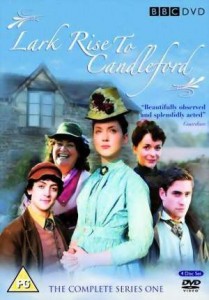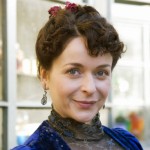new posts in all blogs
Viewing: Blog Posts Tagged with: lark rise to candleford, Most Recent at Top [Help]
Results 1 - 3 of 3
How to use this Page
You are viewing the most recent posts tagged with the words: lark rise to candleford in the JacketFlap blog reader. What is a tag? Think of a tag as a keyword or category label. Tags can both help you find posts on JacketFlap.com as well as provide an easy way for you to "remember" and classify posts for later recall. Try adding a tag yourself by clicking "Add a tag" below a post's header. Scroll down through the list of Recent Posts in the left column and click on a post title that sounds interesting. You can view all posts from a specific blog by clicking the Blog name in the right column, or you can click a 'More Posts from this Blog' link in any individual post.

By: Alice,
on 3/9/2012
Blog:
OUPblog
(
Login to Add to MyJacketFlap)
JacketFlap tags:
Literature,
flora,
Humanities,
lark rise to candleford,
juniper,
*Featured,
oxfordshire,
flora thompson,
agricultural customs,
rural culture,
candleford,
lark,
oilcake,
Add a tag
Lark Rise to Candleford is Flora Thompson’s classic evocation of a vanished world of agricultural customs and rural culture. The trilogy of Lark Rise, Over to Candleford, and Candleford Green tells the story of Flora’s childhood and youth during the 1880s in Lark Rise, in reality Juniper Hill, the hamlet in Oxfordshire where she was born. Through the eyes of Laura, the author’s fictional counterpart, Flora describes the cottages, characters, and way of life of the agricultural labourers and their families with whom she grew up; seasonal celebrations, schooling, church-going, entertainment and story-telling are described in fond and documentary detail. pp. 39-40
Around the farmhouse were grouped the farm buildings; stables for the great stamping shaggy-fetlocked carthorses; barns with doors so wide and high that a load of hay could be driven through; sheds for the yellow-and-blue painted farm wagons; granaries with outdoor staircases; and sheds for storing oilcake, artificial manures, and agricultural implements. In the rickyard, tall, pointed, elaborately thatched ricks stood on stone straddles; the dairy indoors, though small, was a model one there was a profusion of all that was necessary or desirable for good farming.
Labour, too, was lavishly used. Boys leaving school were taken on at the farm as a matter of course, and no time-expired solider or settler on marriage was ever refused a job. As the farmer said, he could always do with an extra hand, for labour was cheap and the land was well tilled up to the last inch.
When the men and the boys from the hamlet reached the farm-yard in the morning, the carter and his assistant had been at work for an hour, feeding and getting ready the horses. After giving any help required, the men and boys would harness and lead out their teams and file off to the field where their day’s work was to be done.
If it rained, they donned sacks, split up one side to form a hood and cloak combined. If it was frosty, they blew upon their nails and thumped their arms across their chest to warm them. If they felt hungry after their bread-and-lard breakfast, they would pare a turnip and munch it, or try a bite or two of the rich, dark brown oilcake provided for the cattle. Some of the boys would sample the tallow candles belonging to the stable lanterns; but that was done more out of devilry than from hunger, for, whoever went short, the mothers took care that their Tom or Dicky should have ‘a bit o’ summat to peck at between meals’ – half a cold pancake or the end of yesterday’s roly-poly.
Flora Thompson was born in 1876 at Juniper Hill, a hamlet on the Oxfordshire-Northamptonshire border described in Lark Rise. After leaving school at the age of fourteen, she was sent to assist the village postmistress, who also kept the smithy, and appears prominently in Candleford Green. After her marriage she moved to Bournemouth, and it was there that she started to write. The trilogy of Lark Rise (1939), Over to Candleford (1941), and Candleford Green (1943) was followed by a fourth autobiographical volume, Still Glides the Stream (1948), published the after Flora Thompson’s death in Devon in May 1947. The introduction to Lark Rise to Candleford is by Phillip Mallett, Lecturer in English at the University of St Andrews.
Subscribe to the OUPblog via email or RSS.
Subscribe to only humanities articles on the OUPblog via
0 Comments on Rural culture in Victorian England as of 1/1/1900
SPOILER ALERT for those who haven’t caught up to Season 3.
Molly left on comment on my Lark Rise post: did anyone know, she wondered, what happened to Alf’s girlfriend Nan?
I replied:
I was wondering that myself. She seems to have been written out between seasons two and three. Which is strange, considering how the season two finale devoted so much time to her—wasn’t that the episode that culminated in Emma’s speech about Nan not believing she deserved a good guy like Alf?
Didn’t that episode end with a kiss for Nan and Alf? It seemed like Emma’s words had made an impact. But in Season 3 (we’re up to episode 4, so far), it’s as if Nan never existed. There’s the hamlet giving Alf a housewarming, but no mention of any impending nuptials.
I can’t say I’m terribly disappointed she’s gone—she tended toward peevishness—but I do like my stories to explain themselves. This seems like an outside-the-story development. (Did audiences dislike her, so the writers have gone another direction? Or was the actress, Rebecca Night, perhaps unavailable? Wikipedia tells me she’s been busy making films.)
Anyway—now I’m seeing “what happened to Nan on Lark Rise” searches show up in my stats, so I thought I’d bring the question up top in case any of you have a more substantive answer than my speculations.
And now it seems we’re being prepped for an Alf-and-Minnie romance? They are (with Queenie) my two favorite characters by far, but as a couple? Seems contrived…
 Are any of you watching Lark Rise to Candleford? It’s a BBC period drama that airs here on our PBS station. We’re about halfway through Season 2; I believe the third season started last month in the UK. It’s set in a somewhat vague 1880s-ish time frame, the story of a small farming hamlet (Lark Rise) and the neighboring market town (Candleford). Season One begins with 16-year-old Laura leaving Lark Rise—somewhat reluctantly—to take a job in the Candleford post office, which is owned and run by Laura’s mother’s cousin, the amiable and efficient Dorcas Lane.
Are any of you watching Lark Rise to Candleford? It’s a BBC period drama that airs here on our PBS station. We’re about halfway through Season 2; I believe the third season started last month in the UK. It’s set in a somewhat vague 1880s-ish time frame, the story of a small farming hamlet (Lark Rise) and the neighboring market town (Candleford). Season One begins with 16-year-old Laura leaving Lark Rise—somewhat reluctantly—to take a job in the Candleford post office, which is owned and run by Laura’s mother’s cousin, the amiable and efficient Dorcas Lane.
 I think it was the glimpse of Dorcas on PBS one night that made us add Season 1 to our Netflix queue; she is played—wonderfully, I have to say, with great nuance—by Julia Sawalha, whom you may remember as the maddeningly flighty Lydia Bennet in the BBC’s Pride and Prejudice. We watched the first season on DVD and then tuned into Season 2 already in progress; I think we came in around episode 5. Annoying, our DVR fizzled out during the recording of episode 7, so we didn’t get to see how things played out with Fisher Bloom—not to mention Laura’s father’s stolen tools, a plot development which made me feel sick to my stomach. Robert Timmins is a stonemason. His tools are his livelihood. I think he’s my favorite character—except maybe for Minnie, Dorcas’s young, semi-competent, chatterbox maid—so I really hate to see him suffer a blow like that. He’s an artist, Robert is.
I think it was the glimpse of Dorcas on PBS one night that made us add Season 1 to our Netflix queue; she is played—wonderfully, I have to say, with great nuance—by Julia Sawalha, whom you may remember as the maddeningly flighty Lydia Bennet in the BBC’s Pride and Prejudice. We watched the first season on DVD and then tuned into Season 2 already in progress; I think we came in around episode 5. Annoying, our DVR fizzled out during the recording of episode 7, so we didn’t get to see how things played out with Fisher Bloom—not to mention Laura’s father’s stolen tools, a plot development which made me feel sick to my stomach. Robert Timmins is a stonemason. His tools are his livelihood. I think he’s my favorite character—except maybe for Minnie, Dorcas’s young, semi-competent, chatterbox maid—so I really hate to see him suffer a blow like that. He’s an artist, Robert is.
I never see anyone talking about this show online, and every week I’m all sputtery over various developments and yearning to gab. Are none of you watching?
Queenie! I forgot. Queenie is my favorite character. Absolutely. And not just because she’s a beekeeper, though that of course is part of it. But also for her warmth and twinkle, her generosity of spirit, her calm good sense. The way she talks to her bees reminds me so much of Linnets and Valerians.
It was awful to see her so distraught last night over the disappearance of her bees, and (now we enter spoiler territory, so be warned) the memory of her saintly grandmother’s dark secret. I thought the bit about the Lark Rise children destroying the Fordlow gardens was a bit of a stretch—even with Twister riling them up, I can’t imagine those kids laying waste to food like that. Not when we’ve seen how lean the pickings can be in Lark Rise at times.
I have no patience for Mr. Dowland’s self-indulgent moping. Enough already. I did love his reaction when Minnie dropped in with the flimsy, ad-libbed story that Dorcas wanted to borrow, um, a cigar case. For her cigars! That glimmer of amusement in his face was the first really likable thing about him.
I miss Caroline Arliss. What happened to her and the rest of Alf’s family? That must be part of what we missed in the beginning of this season.
Honestly, I could watch this show for the scenery alone. Those lush grain fields, the green hills. Oh my heart.




